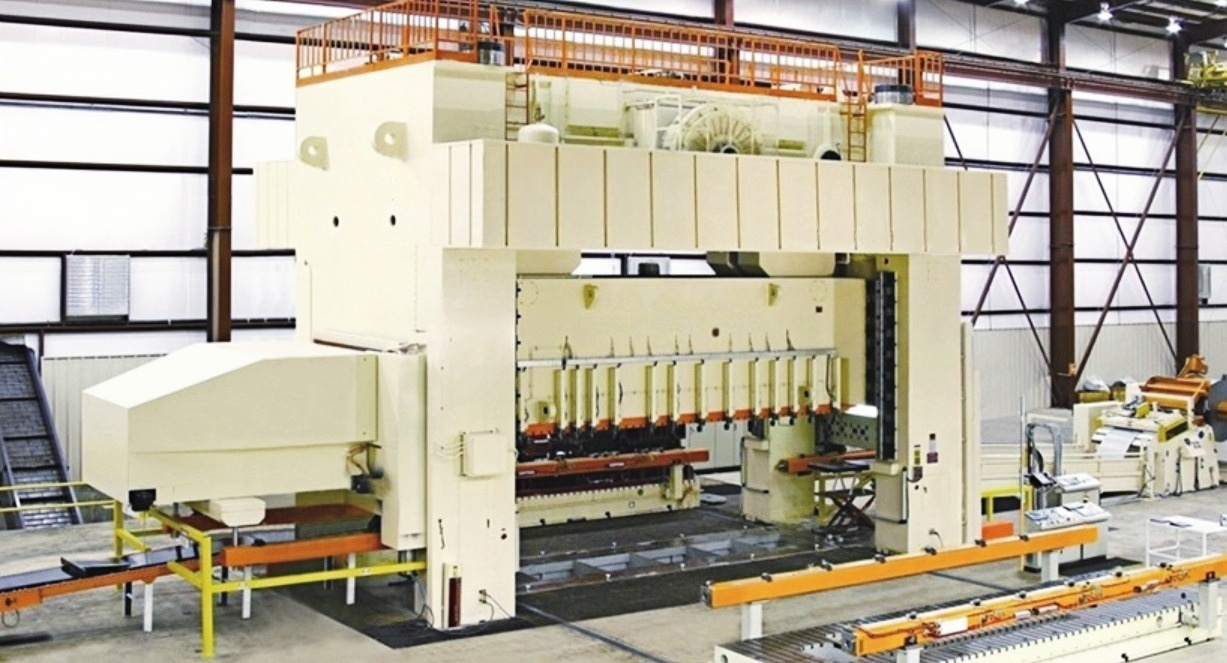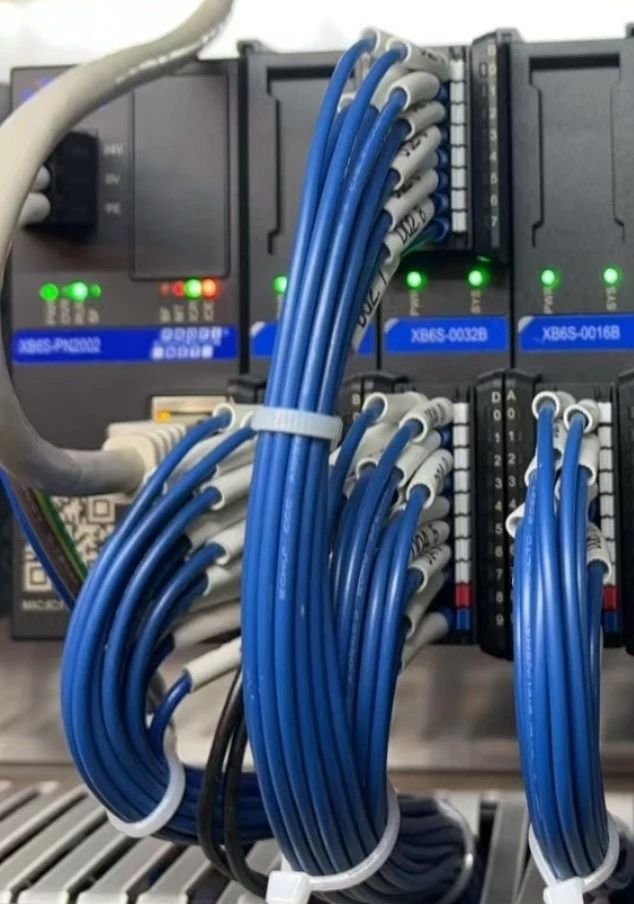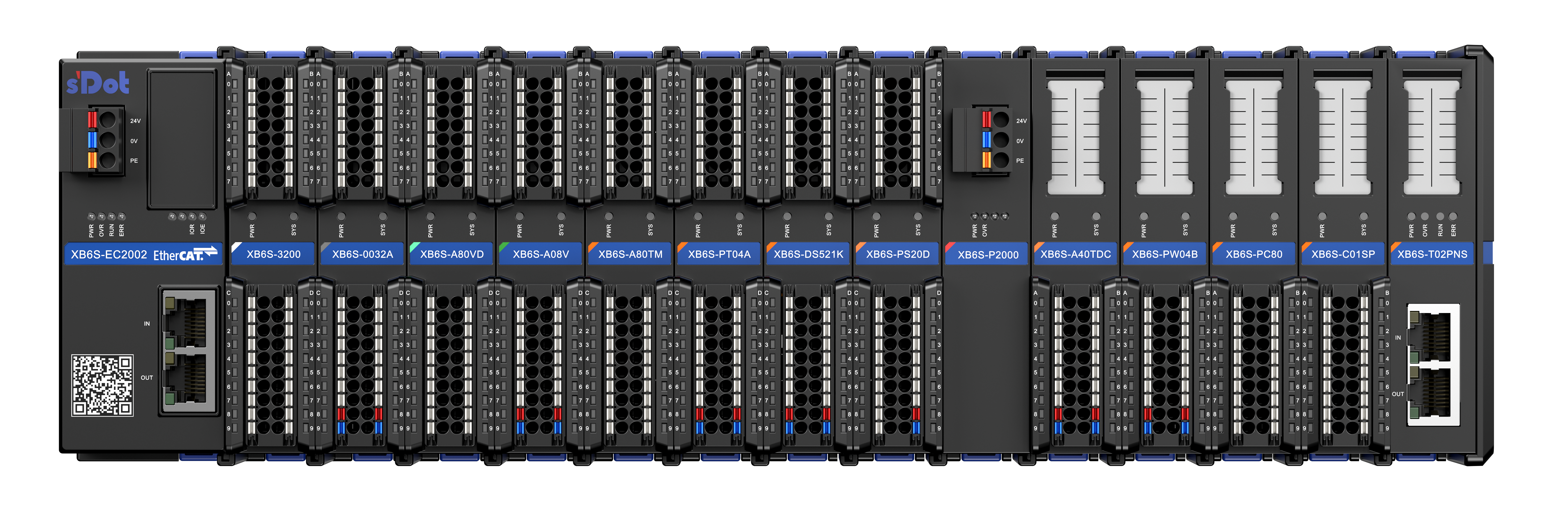The application of Solidot's remote Slice I/O module XB6S in the automotive manufacturing stamping station
In the process of automotive manufacturing, the stamping station plays a crucial role, primarily stamping metal sheets to produce various components of the car body. Stamping stations typically utilize three methods: progressive die stamping, multi-station stamping, and tandem stamping. Each method, due to its unique characteristics, is applied to the production of different automotive sheet metal parts. With the rapid development of the automotive industry, the level of automation in stamping stations is increasing, leading to higher demands for the performance and reliability of automation control systems.
The Solidot products used in this case include XB6S-PN2002, XB6S-3200, XB6S-0032B and XB6S-0016B.

1. Production Process Introduction
The stamping station in this case adopts a multi-station stamping method, which consolidates multiple stamping processes, such as deep drawing, punching, and flanging, on a single press machine. The process mainly includes the following parts:
[Preparation Stage]
Metal sheets are placed in a designated position to ensure they are flat, free of scratches, and free of stains. It is also essential to check that the molds are correctly installed and the press machine is in good condition.
[Feeding]
Metal sheets are accurately fed into the mold of the press machine through an automatic feeding device. The feeding device needs to possess high-precision positioning capabilities to ensure that the sheets are accurately placed in the mold.
[Stamping]
The press machine stamps the metal sheets according to preset programs and pressure parameters. During this process, the design of the molds and the control of the press are crucial, as they directly determine the quality and precision of the stamped parts.
[Unloading]
After stamping is complete, the automatic unloading device removes the formed components from the mold and places them on a conveyor belt, preparing them for the next process. The unloading device must have sufficient power and precision to avoid damaging the components.
2. I/O Module Application Method
Solidot’s remote Slice I/O module series addresses issues such as complex wiring, communication interference, and difficulty in fault location at automotive stamping stations. The unique structural design of the modules simplifies the wiring work for multi-station equipment, saving material and labor costs. The modules also have good anti-interference capabilities, ensuring stable communication. Additionally, the modules feature automatic diagnostics, alarms, and anomaly log recording capabilities to quickly identify fault locations for convenient maintenance.
This case utilizes the PROFINET bus protocol, connecting the PLC to the PROFINET protocol coupler XB6S-PN2002 along with digital input module XB6S-3200, digital output modules XB6S-0032B, and XB6S-0016B to achieve high-speed and accurate data interaction.
During the feeding stage, XB6S-3200 is responsible for collecting sensor signals to determine whether the sheets are in position. In the stamping phase, XB6S-0032B assists in the motion control of the stamping equipment according to commands from the control system, ensuring the stability of the stamping process. In the unloading phase, XB6S-0016B similarly follows commands from the control system to transmit signals that drive the unloading device, achieving the automatic unloading of formed components.

3. High-Reliability Remote I/O Module XB6S Series Products

Solidot’s remote Slice I/O module series is compatible with various bus protocols and includes function modules for motion control, temperature acquisition, and more. The products undergo rigorous EMC testing, providing strong resistance to interference and ensuring no disconnections. They also support diagnostics, alarms, anomaly log recording, and intelligent feedback, making them user-friendly.
Recommended Products

XB6S-PN2002
PROFINET filedbus coupler module

XB6S-3200
32-channel digital input module, input NPN/PNP compatible, input filter default 3ms

XB6S-0032B
32-channel digital output module, output PNP type

XB6S-0016B
16-channel digital output module, output PNP type